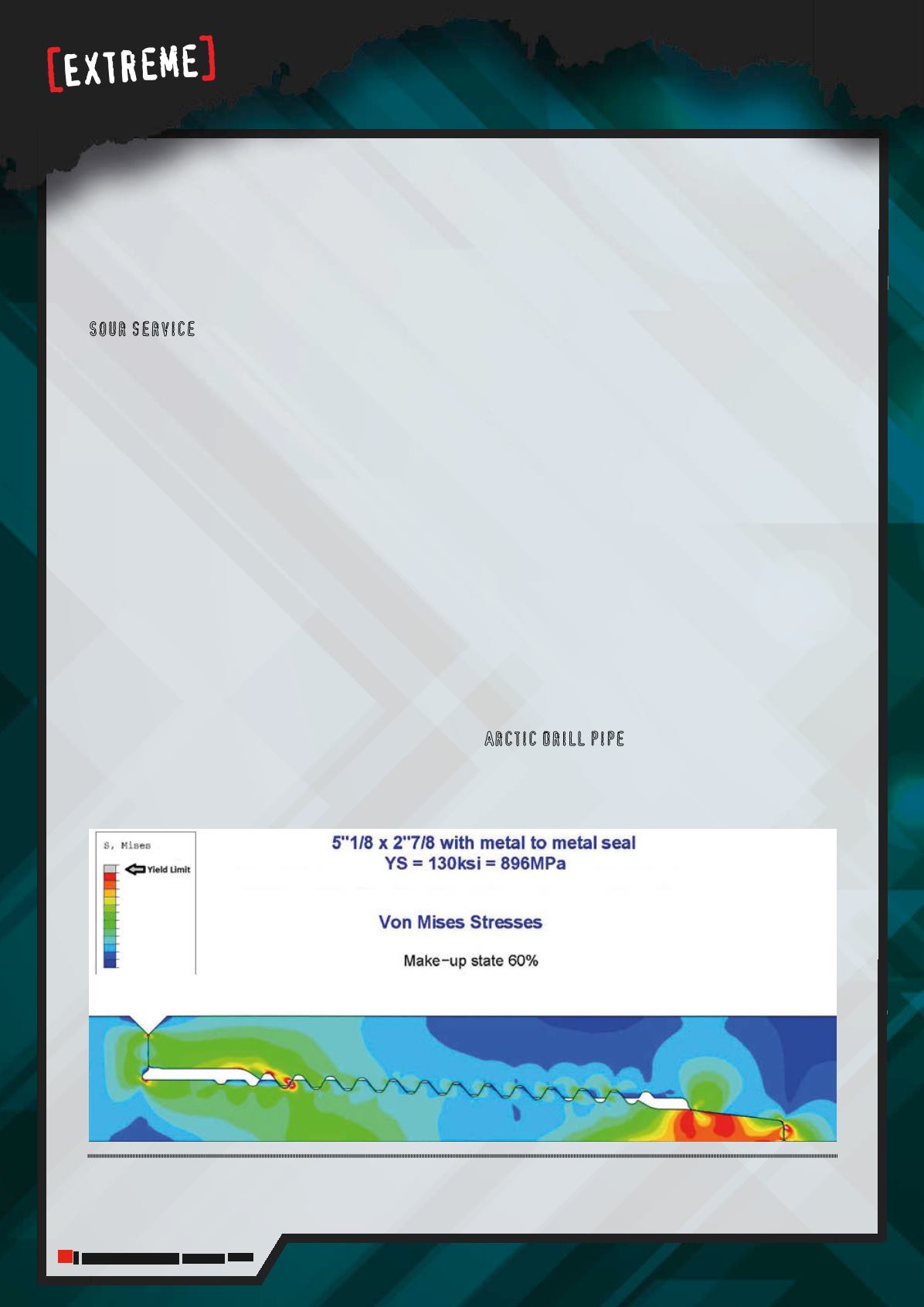
56
|
Oilfield Technology
January
2016
As a result of the design criteria and qualification
process, a gas tight connection with metal-to-metal
technology was developed and qualified for deepwater
drilling and stimulation applications.
Sour service
It is well known that H
2
S is hazardous to human health,
living organisms, and more generally to the environment.
Historically, this is the reason wells containing sour gas
were often carefully plugged and abandoned. Steel tubular
products, such as drill pipe, may be exposed to hydrogen
sulfide (H
2
S) during drilling operations in the event well
control loss, or if the drill pipe is used with under-balanced
drilling techniques. When one or more factors are combined,
this contact can lead to a crack initiation that can propagate
and lead to catastrophic failure, and this even with stresses
largely below the yield limit of the steel.
The combination of tubular failures due to sulfide stress
cracking (SSC) and rising HSE concerns when dealing with
sour gas have led the industry to develop new drill pipe
grades with enhanced resistance to SSC.
Due to the increased demand of domestic gas in different
parts of the world, some highly sour oil and gas reservoirs
are being explored with H
2
S content beyond what could have
been imagined a decade ago. In order to explore, appraise
and develop these new fields, which often combine sour and
deep/complex well profiles, significant safety challenges need
to be overcome, including maintaining drill pipe integrity.
Drilling operations in sour wells are more associated with
complex well profiles, such as deep reservoirs or extended
reach wells. The use of high strength drill pipe is essential to
achieve such drilling objectives. However it does represent
significant technical challenges in terms of drill pipe integrity
and operational safety with the current high strength grades
available on the market. Because higher strength is generally
detrimental to SSC, innovative chemistries and new heat
treatment processes are needed to push Sour Service
material limits even further. Vallourec Drilling Products
developed the first high strength sour service grades in 2013
(VM-120 DP MS and VM-120 DP S), which are being used in
the North Sea and the Middle East.
Also, the new challenges associated with the particularly
sour fields require new highly engineered drill string
solutions in order to increase the safety margin related to
SSC failure risks, especially in the upset and the welded
zones. The drill pipe has long been used with tool joints and
tubes fulfilling separate criteria for sour service as defined
by the IRP Volume 1 (Canadian standard). Both the upset
area and the friction weld present some challenges for
preserving SSC resistance due to some metallurgical factors
such as heterogeneous microstructure, different chemical
compositions between the tool joint and the pipe body and
high hardness values close to the weld line. Steel grades with
enhanced H
2
S resistance in the weld and upset areas have
been developed (VM-95 DP SS+ and VM-105 DP SS+), and the
first string is currently being used in Brazil for workover and
intervention purposes.
Arctic drill pipe
The evolution of the industry towards Arctic environments
has driven the development of more suitable drillstring
solutions adapted to such extreme conditions. Typically, the
Figure 6.
Finite element analysis (FEA) –Next generationgas tight connection 39: 5⅛ in. x 2
⅞
in. – Grade 130 ksi.


